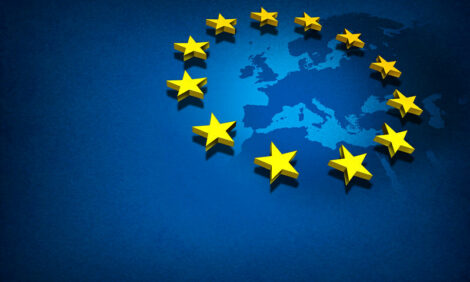



Does Having Protected Geographical Status Boost Product Values?
ANALYSIS - Having protected geographical indication status for food and drink products in the EU can more than double the prices obtained on the open market, writes Chris Harris.A report from the European Commission looking at the value of agricultural production under the protected designations of origin and geographical status found that wines and spirits benefited more from the designations than agricultural products and food stuffs.
The report shows that wines and spirits saw their value increase by more than two and a half times, while foodstuffs and agricultural products including meats and cheeses were one and a half times better off than products without protected status.
The total value premium of the protected geographical indications for the 27 countries in the EU was €29.8 billion or which agricultural products and foodstuffs was €5.6 billion - 19 per cent.
Overall, the total sales value of agricultural products and foodstuffs under geographical indication was €15.8 billion in 2010, the period of the study.
The main sectors were cheeses with 39 per cent, meat products with 20 per cent and beers 15 per cent. Fresh meat and fruit and vegetables sector represented six to eight per cent of the EU sales value.
Between 2005 and 2010, the sales value of the agricultural products and foodstuffs in the scheme grew globally by 19 per cent, from €13.284 billion in 2005 to €15.79 billion in 2010. Two-thirds of growth was due to GIs products registered before 2005 and one-third was due to registration of new geographical indications.
The period examined in the report showed that the volume of geographical indication meat products sold in the EU-27 in 2010 was estimated at 346,000 tonnes worth €3.2 billion - a rise of 32 per cent on the figure for 2005.
The category consisted of cured meat, which was 74 per cent of sales value and cooked meat, 26 per cent of sales value.
In total, Italy with 59 per cent of sales value and Germany with 22 per cent of sales value were the main countries in this sector, the third was France with 11 per cent of sales value and the fourth was Spain with five per cent of sales value.
In Italy, the geographical indications represented 26 per cent of the national cured meat sector in 2010, which the report says was relatively stable on the period, but only five per cent of the cooked meat sector in terms of sales volume.
In Germany, geographical indications represent 3.6 per cent of the cured meat sector and 2.8 per cent of the cooked meat sector in terms of sales volume.
The sales value of geographical indication fresh meat in the EU 27 in 2010 was estimated at €1.2 billion and that the sales volume was estimated at 253 000 tonnes. This was a rise of 20 per cent on the 2005 figures.
The United Kingdom was the leading European Country with 57 per cent of sales value in 2010, followed by Spain with 24 per cent and France 10 per cent.
Beef and veal were the leading geographical indication sector with 46 per cent of EU sales value in the fresh meat sector. Beef, poultry and lamb had 80 per cent of the sales value.
While most poultry sales under geographical indication were due to French geographical indications, beef and lamb sales were spread among several member states.
Nevertheless, the United Kingdom remains the leading country in each of these two geographical indication sectors (lamb and beef).
In the United Kingdom, geographical indications represented 8.1 per cent of the beef sector and 14.1 per cent of the lamb sector in term of sales volume.
In Spain, geographical indications represented 4.9 per cent of the sales volume of national beef sector and 2.5 per cent of lamb sector.
In France, geographical indications represented 8.1 per cent of poultry sector in term of sales volume.
In 2010, the sales volume of cheeses under geographical indications in the EU-27 was estimated at 866 000 tonnes and the sales value at €6.3 billion. Italy, France and Greece accounted for 90 per cent of geographical indications cheeses' sales value and 88 per cent of sales volume.
Sales of geographical indication products to third countries were €11.5 billion, representing 15 per cent of all extra-EU trade for food and beverages. Nearly half of those exports of geographical indication products were wines (51 per cent).
The value of geographical indication spirits exports reached 40 per cent and agricultural products and foodstuffs nine per cent of the EU geographical indication exports.
The United States was by far the leading destination country, with €3.4 billion of imports of EU geographical indication products. Geographical indications accounted for 30 per cent of total food and beverages imports from the EU. Switzerland, Singapore and Canada came next, with €839 million, €829 million and €729 million respectively.
Exported geographical indication products came mainly from France, the United Kingdom and Italy. Products originating from these three countries represent 86 per cent of total extra-EU exports of geographical indication products.







